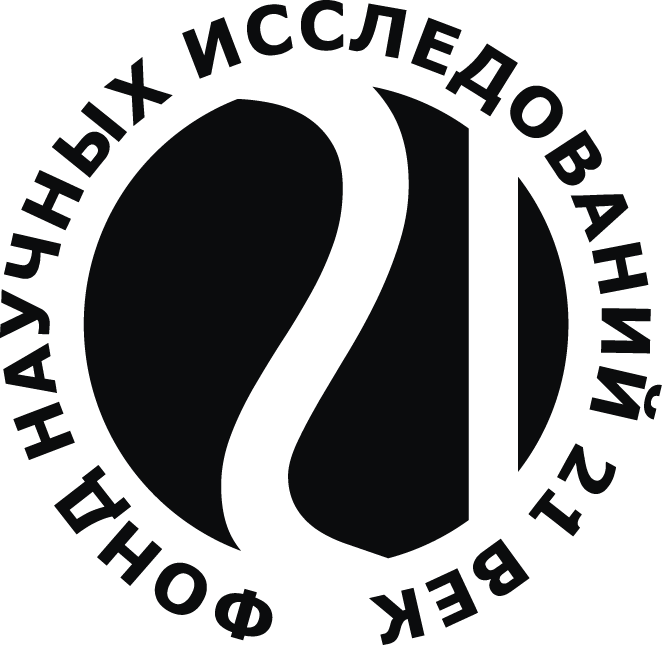CLIMATE WARMING LEADS TO INCREASE IN THE NUMBER OF SHORE ROOKERIES OF BAIKAL SEAL (PUSA SIBIRICA GM.)
Abstract
To find out whether the Baikal seal Pusa sibirica Gm. uses coastal rookeries located outside of Ushkany Islands, we surveyed in 2024 the shores of Lake Baikal using unmanned aerial vehicles (UAV). We recorded previously undescribed locations of coastal rookeries on Sviatoy Nos Peninsula, on the eastern side of Olkhon Island, and on three islands in Maloye More Strait. At the time of the survey, the number of seals at these rookeries amounted to 7 thousand individuals. Therefore, this biotope is highly important for Baikal seal. Using camera traps installed on Sviatoy Nos Peninsula, we showed that one of the newly discovered rookeries functioned throughout the summer. The dynamics of animal counts at the rookery and the 24-h activity of seals are reported. It is supposed that the newly discovered locations of coastal rookeries were used by Baikal seals decades ago, and later their role came to naught. However, due to the changes in ice regimen caused by global warming, the number of seals experiencing a physiological need to stay in coastal conditions increased significantly. This has led to the revival of many coastal rookeries, primarily those not experiencing critical anthropogenic influence.
Keywords
Как процитировать материал
References
Иванов ТМ. Байкальская неpпа, её биология и пpомысел. Известия биолого-геогpафического НИИ пpи Восточно-Сибирском государственном университете. 1938;8(1–2):1-119.
Бреховской ЮП, ред. Номенклатура морских льдов. Условные обозначения для ледовых карт. Л.: Гидрометеоиздат; 1974.
Овдин МЕ., Петров ЕА. Особенности освоения байкальской нерпой (Pusa sibirica Gm.) береговых лежбищ на Ушканьих островах (оз. Байкал) весной 2023 г. по данным фотоловушек. Международный научно-исследовательский журнал. 2024;12 (150):1–8.
Пастухов ВД. Байкальская нерпа: биологические основы рационального использования и охраны ресурсов. Новосибирск: Наука; 1993.
Петров ЕА, Купчинский АБ, Фиалков ВА, Бадардинов АА. Значение берега в жизни байкальской нерпы (Gmelin, 1788, Pinnipedia). № 3. Функционирование лежбищ байкальской нерпы на о. Тонкий (Ушканьи острова, оз. Байкал) по материалам видео наблюдений // Зоологический журнал. 2021. Т. 100. № 7. С. 823–840.
Петров ЕА, Купчинский АБ. Основная причина выхода байкальской нерпы (Pusa sibirica Gm.) на береговые лежбища – растянутая смена волосяного покрова (линька) на фоне потепления. Зоологический журнал. 2023;102 (2):201–14.
Петров ЕА, Купчинский АБ, Овдин МЕ. Северо-восточное побережье оз. Байкал как место обитания байкальской нерпы (Pusa sibirica Gm., 1778) в летний период. Известия ТИНРО. 2023;203(2):371–91.
Петров ЕА, Купчинский АБ. Западное побережье оз. Байкал как место обитания байкальской нерпы Pusa sibirica в летний период. Известия ТИНРО. 2024;204(1): 112–33.
Риттер К. Землеведение Азии. География стран, входящих в состав Азиатской России или пограничных с нею. Восточная Сибирь: озеро Байкал и прибайкальские страны, Забайкалье и степь Гоби. Вып. 2, часть 2. С.-Петербург, 1879.
Черноок ВИ, Болтнев АИ. Регулярный инструментальный авиамониторинг зафиксировал резкое снижение рождаемости беломорской популяции гренландского тюленя. В кн.: Морские млекопитающие Голарктики. М.: РОО Совет по морским млекопитающим; 2008. С. 100–4.
Ivanov TM. [Baikal seal, its biology and trade]. Izvestiya Biologo-Geogpaficheskogo NII pri Vostochno-Sibirskom Gosudarstvennom Universitete. 1938;8(1–2):5-119. (In Russ.)
Brekhovskiy YuP, ed. Nomenklatura Morskikh Ldov [Nomenclature of Sea Ice. Conventional Designations for Ice Maps. Leningrad: Gidrometeoizdat; 1974. (In Russ.)
Ovdin ME, Petrov EA. [Features of the development of coastal rookeries on the Ushkany Islands (Lake Baikal) by the Baikal seal (Pusa sibirica Gm.) in the spring of 2023 according to camera trap data]. Mezhdunarodnyi Nauchno-Issledovatel'skiy Zhurnal. 2024;12 (150):1–8. (In Russ.)
Pastukhov VD. Baykal'skaya Nerpa: Biologicheskiye Osnovy Ratsionalnogo Ispolzovaniya i Okhrany Resursov. [Baikal Seal: Biological Basis for the Rational Use and Protection of Resources]. Novosibirsk: Nauka; 1993. (In Russ.)
Petrov EA, Kupchinsky AB, Fialkov VA, Badardinov AA. The Importance of the Coast in the Life of the Baikal Seal (Gmelin, 1788, Pinnipedia). No. 3. Functioning of Baikal Seal Rookeries on Tonkiy Island (Ushkany Islands, Lake Baikal) Based on Video Observations // Zoologicheskiy Zhurnal . 2021;100 (7):823–40 (In Russ.)
Petrov EA, Kupchinsky AB. [The main reason for the Baikal seal (Pusa sibirica Gm.) coming to coastal rookeries is the extended change of hair cover (molting) against the background of warming]. Zoologicheskiy Zhurnal. 2023;102 (2):201–14. (In Russ.)
Petrov EA, Kupchinsky AB, Ovdin ME. [Northeastern coast of Lake Baikal as a habitat of the Baikal seal (Pusa sibirica Gm., 1778) in summer]. Izvestiya TINRO. 2023;203(2):371–91. (In Russ.)
Petrov EA, Kupchinsky AB. [The western coast of Lake Baikal as a habitat for the Baikal seal Pusa sibirica in summer]. Izvestiya TINRO. 2024;204(1):112-33/ (In Russ.)
Ritter K. Zemlevedeniye Azii. Geografiya stran, Vkhodyashchikh v Sostav Aziatskoy Rossii ili Pogranichnykh s Neyu. Vostochnaya Sibir: Ozero Baykal i Pribaykalskiye Strany, Zabaykalye i Step Gobi [Geoscience of Asia. Geography of the Countries that are Part of Asian Russia or Border it. Eastern Siberia: Lake Baikal and the Baikal countries, Transbaikalia and the Gobi steppe] Issue 2, part 2. Saint Petersburg; 1879. (In Russ.)
Chernook VI, Boltnev AI. [Regular instrumental aerial monitoring recorded a sharp decline in the birth rate of the White Sea population of harp seals]. In: Morskiye Mlekopitayushchiye Golarktiki. Moscow: ROO «Sovet po Morskim Mlekopitayushchim»; 2008. P. 100–4. (In Russ.)
Blanchet M-A, Vincent C, Womble JN, Steingass SM, Desportes G. Harbour seals: population structure, status, and threats in a rapidly changing environment. Oceans. 2021; 2:41–63.
Goodman S. Pusa sibirica. The IUCN Red List of Threatened Species 2016:e.T41676A45231738
Kovacs KM, Aguilar A, Aurioles D, Burkanov V, Campagna C, Gales N, Gelatt T, Goldsworthy SD, Goodman SJ, Hofmeyr GJG, Onen TH, Lowry L, Lydersen Ch, Schipper J, Sipila T, Southwell C, Stuart S, Thompson D, Trillmich F. Global threats to pinnipeds. Marine Mammal Sci. 2012;28(2):414–36
Kouraev AV, Semovski SV, Shimaraev MN, Mognard NM, Legresy B, Remy F. The ice regime of Lake Baikal from historical and satellite data: Relationship to air temperature, dynamical, and other factors. Limnol Oceanogr. 2007; 52(3):1268–86
Petrov EA, Kupchinsky AB, Fialkov VA. Summer coastal rookeries and perspectives of the Baikal seal (Pusa sibirica) population in the conditions of the global warming. Biosyst Divers. 2021; 29(4):387-92.
Vacquié-Garcia J, Lydersen Ch, Lydersen E, Christensen GN, Guinet C, Kovacs KM. Seasonal habitat use of a lagoon by ringed seals Pusa hispida in Svalbard, Norway. Marine Ecol Progr Sers. 2021; 675:153–64
Vazquez JM, Khudyakov JI, Madelaire CB, Godard-Codding CA, Routti H, Lam EK, Piotrowski ER, Merrill GB, Wisse JH, Allen KN, Conner J, Blevin P, Spyropoulos DD, Goksøyr A, Vazquez-Medina JP. Ex vivo and in vitro methods as a platform for studying anthropogenic effects on marine mammals: four challenges and how to meet them. Front Mar Sci. 2024;11:1466968.
DOI: http://dx.doi.org/10.24855/biosfera.v17i1.969
© ФОНД НАУЧНЫХ ИССЛЕДОВАНИЙ "XXI ВЕК"









